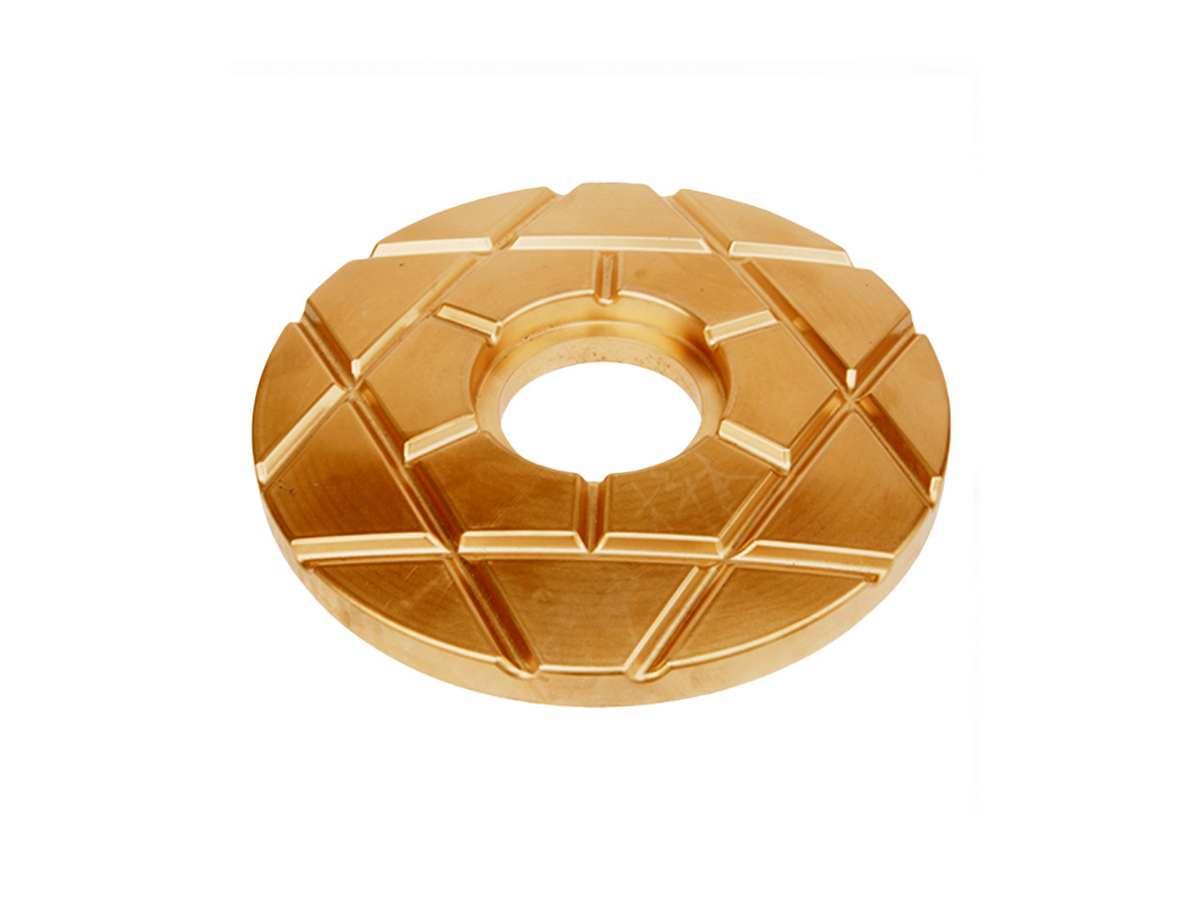High-Quality CNC Machining of C83600 Leaded Red Brass for Plumbing and Valves
Introduction
Plumbing and valve applications demand materials that deliver superior machinability, excellent corrosion resistance, and dependable mechanical performance. C83600 Leaded Red Brass is highly preferred in these industries for its optimal balance of strength (up to 310 MPa tensile strength), exceptional resistance to dezincification, and excellent casting and machining properties. These characteristics make C83600 ideal for critical components such as fittings, valves, pump housings, and plumbing fixtures across the consumer products, industrial equipment, and agricultural machinery industries.
Utilizing advanced CNC machining, manufacturers can achieve precise dimensions, intricate geometries, and consistent quality with C83600 components, enhancing reliability and durability in plumbing and valve applications.
C83600 Leaded Red Brass for Plumbing and Valves Applications
Material Performance Comparison
Material | Tensile Strength (MPa) | Yield Strength (MPa) | Corrosion Resistance | Typical Applications | Advantage |
|---|---|---|---|---|---|
240-310 | 90-130 | Excellent (Dezincification Resistance) | Plumbing valves, fittings | High machinability, corrosion-resistant | |
340-470 | 170-310 | Good | General plumbing fittings | Superior machinability | |
515-586 | 205-240 | Exceptional | High-pressure valves, heavy fittings | Excellent wear resistance, strength | |
220-310 | 70-220 | Outstanding | High-conductivity plumbing components | Superior electrical and thermal conductivity |
Material Selection Strategy
Choosing the appropriate alloy for plumbing and valve components involves evaluating machinability, corrosion resistance, strength, and application-specific requirements:
Plumbing valves, fittings, and pump housings requiring excellent corrosion resistance and superior machinability significantly benefit from C83600 Leaded Red Brass, ensuring durability and cost-effective manufacturing.
General plumbing fittings and components demanding superior machinability and moderate strength (340-470 MPa) often utilize Brass C360, providing production efficiency and reliable performance.
High-pressure valves, heavy fittings, and components subject to severe wear and corrosion conditions require high-strength alloys like C95400 Aluminum Bronze (515-586 MPa), optimizing reliability under demanding operational environments.
Components requiring superior electrical and thermal conductivity, such as heat exchangers and specialized plumbing hardware, often select Copper C110, maximizing performance in specific applications.
CNC Machining Processes
Process Performance Comparison
CNC Machining Technology | Dimensional Accuracy (mm) | Surface Roughness (Ra μm) | Typical Applications | Key Advantages |
|---|---|---|---|---|
±0.01-0.02 | 0.8-1.6 | Valve stems, cylindrical fittings | Precise cylindrical components, efficient | |
±0.003-0.01 | 0.2-0.6 | Complex valve bodies, fittings | Intricate shapes, high precision | |
±0.01-0.03 | 1.6-3.2 | Mounting holes, threaded fittings | Accurate hole placement, rapid production | |
±0.002-0.01 | 0.1-0.4 | Precision sealing surfaces, valve seats | Ultra-high precision, excellent finishes |
Process Selection Strategy
Selecting CNC machining processes for C83600 Leaded Red Brass plumbing and valve components depends on complexity, precision, and specific functional needs:
Valve stems, cylindrical fittings and basic plumbing components requiring moderate precision (±0.01-0.02 mm) efficiently utilize CNC Turning, ensuring rapid, accurate machining.
Complex valve bodies, plumbing fittings, and intricate geometries demanding extremely tight tolerances (±0.003-0.01 mm) significantly benefit from Multi-Axis CNC Milling, achieving precision and structural reliability.
Mounting holes, threaded fittings, and rapid production requirements needing quick, accurate machining (±0.01-0.03 mm) employ CNC Drilling, reducing production time and improving efficiency.
Precision sealing surfaces, valve seats, and critical mechanical interfaces needing ultra-high accuracy (±0.002-0.01 mm) and excellent surface finishes (Ra ≤0.4 μm) utilize CNC Grinding, optimizing sealing performance and durability.
Surface Treatment
Surface Treatment Performance
Treatment Method | Corrosion Resistance | Wear Resistance | Max Operating Temp (°C) | Typical Applications | Key Features |
|---|---|---|---|---|---|
Exceptional (≥1000 hrs ASTM B117) | Very High | Up to 250 | Decorative fittings, exposed valves | Enhanced appearance, corrosion resistance | |
Excellent (~900 hrs ASTM B117) | Moderate-High | Up to 300 | Internal plumbing components, valves | Smooth surface, reduced friction | |
Excellent (~1000 hrs ASTM B117) | Moderate | Up to 200 | Internal fittings, valves | Corrosion resistance, surface purity | |
Very Good (~800 hrs ASTM B117) | Moderate | Up to 120 | Decorative plumbing fixtures | Enhanced aesthetics, moderate protection |
Surface Treatment Selection
Choosing surface treatments for C83600 Leaded Red Brass plumbing and valve components involves assessing corrosion protection, aesthetic needs, and wear resistance:
Decorative fittings and valves exposed to harsh environments significantly benefit from Nickel or Chrome Electroplating, enhancing corrosion resistance and aesthetic appeal.
Internal plumbing components, precision valves, and fittings needing smooth surfaces for optimal flow and reduced friction utilize Electropolishing, ensuring reliable performance.
Internal fittings, valve bodies, and components exposed to corrosive fluids choose Passivation, maintaining surface purity and corrosion resistance.
Decorative plumbing fixtures and components requiring moderate corrosion protection and enhanced aesthetics often utilize Clear Protective Coating, ensuring attractive finishes and durability.
Quality Control
Quality Control Procedures
Comprehensive dimensional inspections using Coordinate Measuring Machines (CMM) and high-precision optical comparators to ensure compliance with tight tolerances.
Surface roughness and finish evaluations were conducted with precision profilometers to meet critical performance standards for sealing surfaces.
Mechanical property verification (tensile, yield strength, hardness) performed according to ASTM B505 and applicable industry specifications for brass components.
Corrosion resistance testing through ASTM B117 (Salt Spray Test) to confirm dezincification resistance and long-term durability in plumbing environments.
Pressure testing and leak integrity inspections were conducted for valve components, ensuring reliable performance under operational conditions.
Non-destructive testing (NDT), including ultrasonic inspection and radiographic examination for critical plumbing and valve parts, verifying structural integrity.
Detailed quality documentation and traceability reports conforming to ISO 9001 standards and plumbing industry regulations.
Industry Applications
C83600 Leaded Red Brass Component Applications
Plumbing fittings and valves.
Pump housings and valve bodies.
Industrial fluid control systems.
Agricultural and irrigation components.
Related FAQs:
Why is C83600 Leaded Red Brass ideal for plumbing and valve components?
How does CNC machining ensure precision in brass fittings?
What surface treatments enhance durability in C83600 brass components?
Which industries typically use C83600 Leaded Red Brass parts?
What quality standards are followed for CNC machining brass plumbing components?

